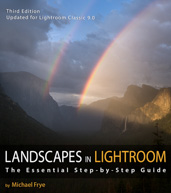by Michael Frye | Nov 26, 2023 | Vision and Creativity
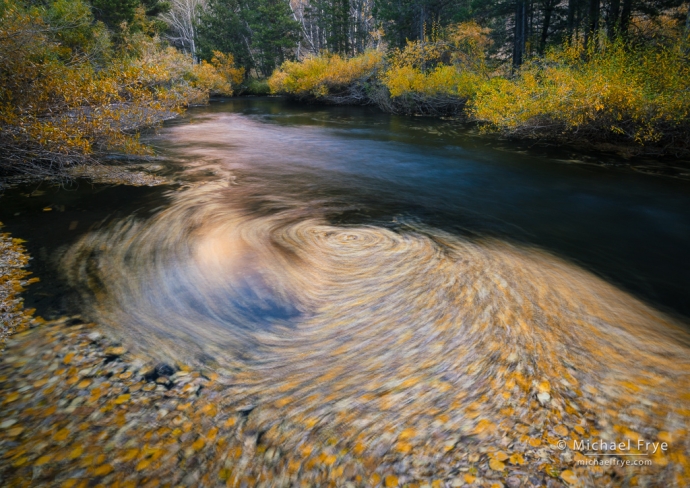
Swirling leaves, Inyo NF, California. (See the text for a detailed description of this photo.)
In between our visits to the Pacific Northwest Claudia and I spent a little time in the Eastern Sierra, and close to home in Yosemite. Last year I was in New Zealand in October, and I missed our local autumn, so it was nice to catch a bit of autumn glow in some of our favorite places.
When photographing familiar locations it’s easy to get jaded and think, “I’ve done all this before.” But actually you haven’t. No place is ever exactly the same, because things are always changing. And you’ve changed too; you’re not the same person, or the same photographer, as the last time you were there.
When I go back to a familiar spot, I often ask myself what’s changed – what’s different about the conditions that might create new opportunities. What’s happening now that’s interesting or unusual? It could be the light, the weather, fall color, flowers, water levels, beavers flooding a grove of aspens, a riverbank eroding… nothing ever stays the same.
(more…)
by Michael Frye | Nov 16, 2023 | Advanced Techniques, Vision and Creativity
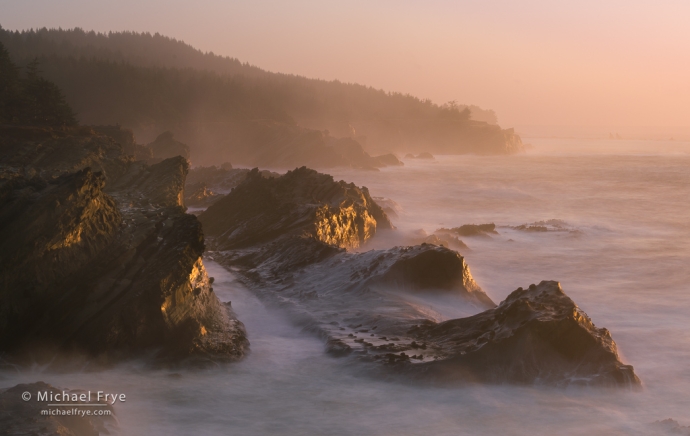
Misty sunset on the Oregon Coast. 73mm, 8 seconds at f/16, ISO 100, ND filter.
Claudia and I have been spending a lot of time in the Pacific Northwest this year, which is great, as I love this part of the world. We just finished a workshop along the Oregon Coast, and now we’re making our way to Bellingham, Washington, to visit our son and daughter-in-law, and stopping to see friends along the way.
The workshop was a lot of fun. A great group of people, and we saw some beautiful light, as well as big waves crashing against the shore.
(more…)
by Michael Frye | Oct 19, 2023 | Digital Darkroom
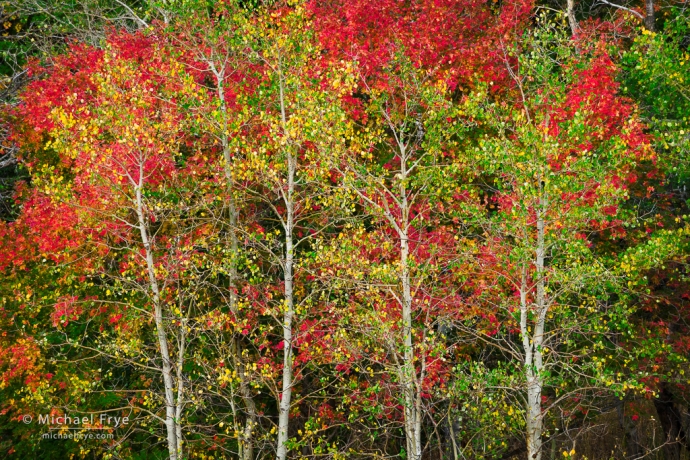
Aspens and bigtooth maples, northern Utah. I used the new Point Color tool to tweak the originally dull-looking greens and yellows in this photo and make them more vibrant.
Last week Adobe launched major updates to Lightroom Classic (13.0), Lightroom Desktop (7.0), and Lightroom Mobile (9.0). The biggest new features are HDR editing, Point Color, and Lens Blur.
All of these new tools deserve their own post, but we just finished a workshop, and we’re still traveling, so for now I’m just going to explain a few of the salient features, and steer you to some more in-depth information.
(more…)
by Michael Frye | Oct 1, 2023 | Travels and Stories
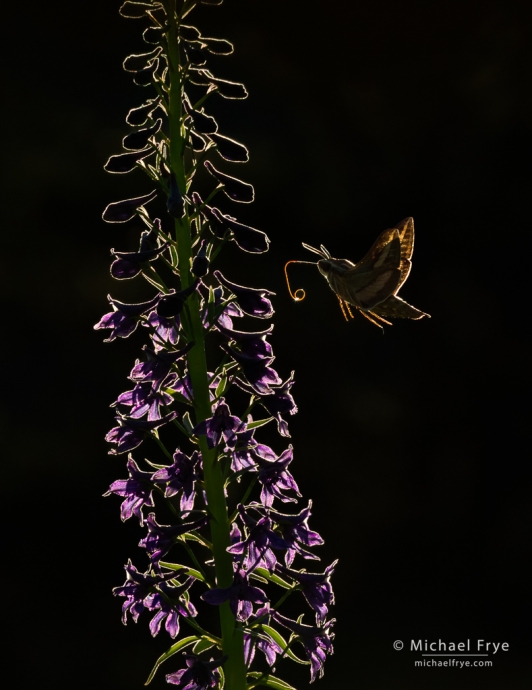
White-lined sphinx moth and larkspur, Yosemite NP, California. 200mm, 1/4000 sec. at f/16, ISO 1250.
Summer arrived late this year in the Sierra high country, as the prodigious amounts of snow left over from last winter took awhile to melt. Snowmelt, mosquitos, and wildflower blooms all started and ended at least a month later than normal.
But that meant that summer lingered longer as well; we were still finding lots of flowers in late August.
And something about the timing of everything, or the great abundance of flowers, seemed to suit the white-lined sphinx moths. Claudia and I started seeing lots of these moths, along with their caterpillars, during July in the Eastern Sierra, and kept finding them anywhere we saw flowers for a good two months afterward.
(more…)
by Michael Frye | Sep 3, 2023 | Composition
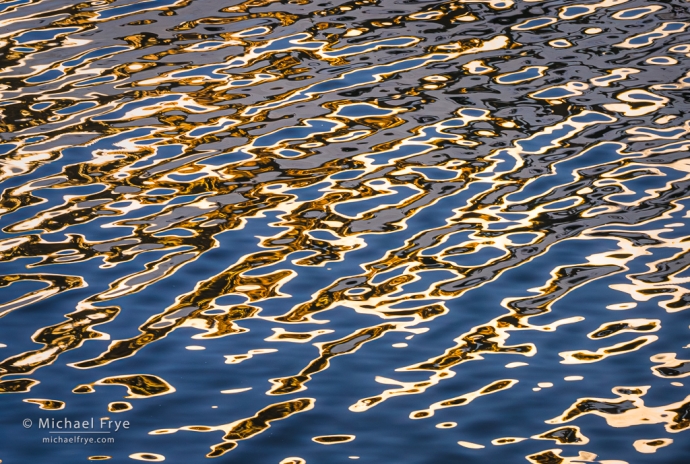
Ripples and reflections in an alpine lake, Inyo NF, California. 227mm, 1/125 sec. at f/22, ISO 1250.
During our Range of Light workshop in July we found some striking reflections in a mountain lake. These weren’t mirror reflections, because a nearby cascade was pouring into the lake, rippling the surface of the water. But that’s actually what made the reflections so interesting. The ripples created squiggly lines and shapes in the water, as the surface reflected blue sky and late-day, golden light shining on rocks and snowbanks across the lake.
It was a great situation for making abstract images, so I encouraged our participants to zoom in with a long lens to try to capture the patterns. While I often like using slow shutter speeds for water images, capturing these ripples required fast shutter speeds to freeze the water’s motion and preserve the intricate patterns. And the patterns would be more prominent if everything was in focus, which required stopping down the aperture to get as much depth of field as possible.
(more…)












